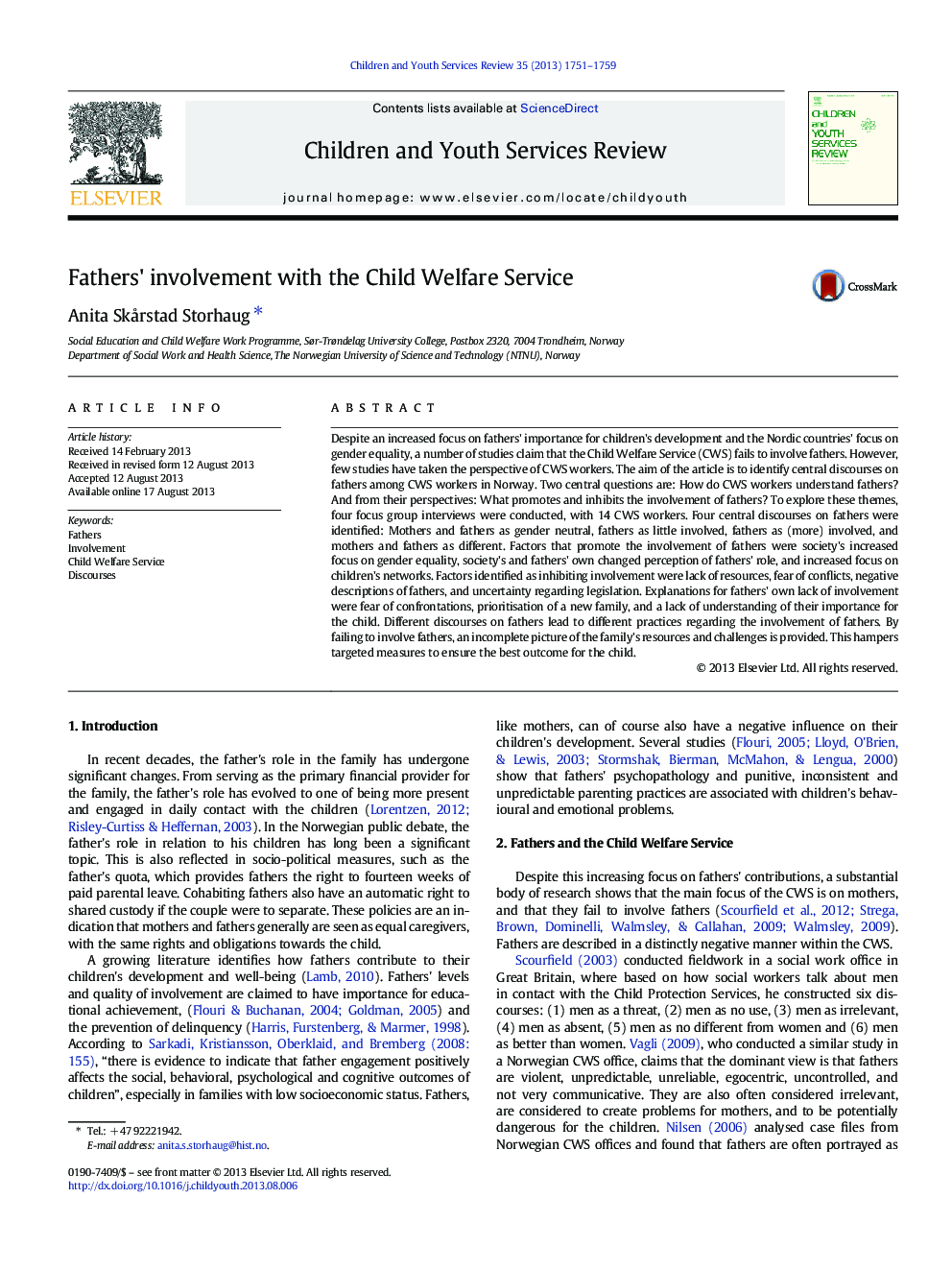| کد مقاله | کد نشریه | سال انتشار | مقاله انگلیسی | نسخه تمام متن |
|---|---|---|---|---|
| 346073 | 617799 | 2013 | 9 صفحه PDF | دانلود رایگان |

• Examining Child Welfare Service workers' understanding of fathers
• 4 discourses constructed
• Different understandings of fathers and legislation lead to different practice.
Despite an increased focus on fathers' importance for children's development and the Nordic countries' focus on gender equality, a number of studies claim that the Child Welfare Service (CWS) fails to involve fathers. However, few studies have taken the perspective of CWS workers. The aim of the article is to identify central discourses on fathers among CWS workers in Norway. Two central questions are: How do CWS workers understand fathers? And from their perspectives: What promotes and inhibits the involvement of fathers? To explore these themes, four focus group interviews were conducted, with 14 CWS workers. Four central discourses on fathers were identified: Mothers and fathers as gender neutral, fathers as little involved, fathers as (more) involved, and mothers and fathers as different. Factors that promote the involvement of fathers were society's increased focus on gender equality, society's and fathers' own changed perception of fathers' role, and increased focus on children's networks. Factors identified as inhibiting involvement were lack of resources, fear of conflicts, negative descriptions of fathers, and uncertainty regarding legislation. Explanations for fathers' own lack of involvement were fear of confrontations, prioritisation of a new family, and a lack of understanding of their importance for the child. Different discourses on fathers lead to different practices regarding the involvement of fathers. By failing to involve fathers, an incomplete picture of the family's resources and challenges is provided. This hampers targeted measures to ensure the best outcome for the child.
Journal: Children and Youth Services Review - Volume 35, Issue 10, October 2013, Pages 1751–1759